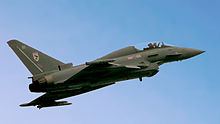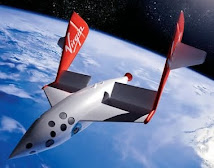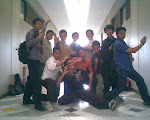Indonesian Space Force Command
Komando Untuk Keamanan Luar Angkasa
Dari Angkatan Antariksa Indonesia
"Kami Menjelajahi Alam Raya untuk Menemukan Keagungan Sang Maha Kuasa"
~Gen. Arip Nurahman~
(Komando Pasukan Khusus Angkatan Antariksa Indonesia)
(Korps Pasukan Khas Angkatan Udara)
Jet-powered fighters
It has become common in the aviation community to classify jet fighters by "generations" for historical purposes. There
are no official definitions of these generations; rather, they
represent the notion that there are stages in the development of fighter
design approaches, performance capabilities, and technological
evolution.
The
timeframes associated with each generation are inexact and are only
indicative of the period during which their design philosophies and
technology employment enjoyed a prevailing influence on fighter design
and development. These timeframes also encompass the peak period of
service entry for such aircraft.
Fourth generation jet fighters (circa 1970 to mid-1990s)
Fourth-generation
fighters continued the trend towards multirole configurations, and
were equipped with increasingly sophisticated avionics and weapon
systems. Fighter designs were significantly influenced by the
Energy-Maneuverability (E-M) theory developed by
Colonel John Boyd
and mathematician Thomas Christie, based upon Boyd's combat experience
in the Korean War and as a fighter tactics instructor during the
1960s. E-M theory emphasized the value of
aircraft specific energy maintenance as an advantage in fighter combat.
Boyd
perceived maneuverability as the primary means of getting "inside" an
adversary's decision-making cycle, a process Boyd called the "
OODA loop"
(for "Observation-Orientation-Decision-Action"). This approach
emphasized aircraft designs that were capable of performing "fast
transients" – quick changes in speed, altitude, and direction – as
opposed to relying chiefly on high speed alone.
E-M
characteristics were first applied to the F-15 Eagle, but Boyd and his
supporters believed these performance parameters called for a small,
lightweight aircraft with a larger, higher-
lift wing. The small size would minimize
drag and increase the
thrust-to-weight ratio, while the larger wing would minimize
wing loading;
while the reduced wing loading tends to lower top speed and can cut
range, it increases payload capacity and the range reduction can be
compensated for by increased fuel in the larger wing. The efforts of
Boyd's "
Fighter Mafia" would result in
General Dynamics' (now
Lockheed Martin's)
F-16 Fighting Falcon.
The
F-16's manoeuvrability was further enhanced by its being designed to
be slightly aerodynamically unstable. This technique, called "
relaxed static stability" (RSS), was made possible by introduction of the "fly-by-wire" (FBW)
flight control system
(FLCS), which in turn was enabled by advances in computers and system
integration techniques. Analog avionics, required to enable FBW
operations, became a fundamental requirement and began to be replaced
by digital flight control systems in the latter half of the 1980s.
Likewise,
Full Authority Digital Engine Controls (FADEC) to electronically manage powerplant performance were introduced with the
Pratt & Whitney F100 turbofan. The
F-16's sole reliance on electronics and wires to relay flight commands,
instead of the usual cables and mechanical linkage controls, earned it
the sobriquet of "the electric jet". Electronic FLCS and FADEC quickly
became essential components of all subsequent fighter designs.
Another
revolution came in the form of a stronger reliance on ease of
maintenance, which led to standardisation of parts, reductions in the
numbers of access panels and lubrication points, and overall parts
reduction in more complicated equipment like the engines. Some early jet
fighters required 50
man-hours
of work by a ground crew for every hour the aircraft was in the air;
later models substantially reduced this to allow faster turn-around
times and more sorties in a day. Some modern military aircraft only
require 10 man-hours of work per hour of flight time, and others are
even more efficient.
Unlike
interceptors of the previous eras, most fourth-generation
air-superiority fighters were designed to be agile dogfighters (although
the
Mikoyan MiG-31 and
Panavia Tornado ADV are notable exceptions). The
continually rising cost of fighters, however, continued to emphasize the
value of multirole fighters. The need for both types of fighters led
to the "high/low mix" concept which envisioned a high-capability and
high-cost core of dedicated air-superiority fighters (like the
F-15 and
Su-27) supplemented by a larger contingent of lower-cost
multi-role fighters (such as the
F-16 and
MiG-29).
Perhaps the most novel technology to be introduced for combat aircraft was "
stealth",
which involves the use of special "low-observable" (L-O) materials and
design techniques to reduce the susceptibility of an aircraft to
detection by the enemy's sensor systems, particularly radars. The first
stealth aircraft to be introduced were the
Lockheed F-117 Nighthawk attack aircraft (introduced in 1983) and the
Northrop Grumman B-2 Spirit
bomber (which first flew in 1989). Although no stealthy fighters per
se appeared amongst the fourth generation, some radar-absorbent
coatings and other L-O treatments developed for these programs are
reported to have been subsequently applied to fourth-generation
fighters.
- See also: List of fourth generation jet fighters
Powered By:
Tentara Nasional Indonesia Angkatan Darat (Indonesian Army)
Tentara Nasional Indonesia Angkatan Laut (Indonesian Navy)
Tentara Nasional Indonesia Angkatan Udara (Indonesian Air Force)
Kepolisian Negara Republik Indonesia (Indonesian Police)
Sumber: Wikipedia















































